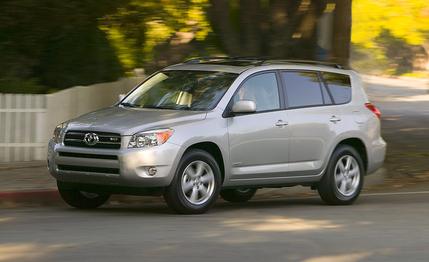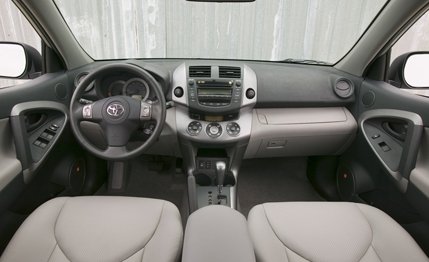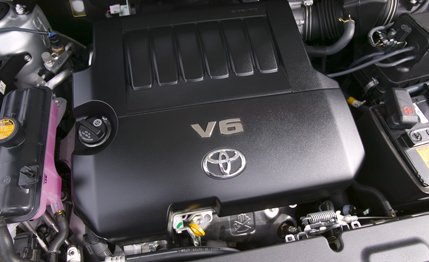
 Road Test
Road Test
What is a RAV4 anyway? The name has been stumbling off tongues since Toyota's wee sport-ute first hit in 1996. RAV4 sounds like Army code, or the season finale of the International Federation of Competitive Eating. As in: See our ravenous contestants suck down entire bowls of mayonnaise—at RAV4!
Toyota says it's short for "Recreational Active Vehicle with 4-wheel drive." Oh.
Pardon us if we can't get misty over that ostentatious acronym, and while you're at it, pardon us for failing to coin a universally accepted description of the RAV4's genus. Is it a crossover, a sport wagon, a cute ute, or a soft-roader? Write your congressional representative—not us—if you have strong feelings either way. Future epigraphists, at least, will be watching to see how it all shakes out.
Meanwhile, let us bend your corneas for a moment about what may be the quickest-accelerating, best-handling, and most efficiently packaged, uhhhh, sub-Suburban on the market today. From an underpowered punk runabout to a sports sedan on stilts, the evolution of the RAV4—now in its third generation—to something more serious, more likable, more everyday livable is an event worth celebrating.


Destined for arrival in dealerships this month, the 2006 RAV4 comes in base, Sport, and Limited trim, the latter pictured on the pages here but without the optional fold-flat third-seat row that is available on all trim levels. Prices were a secret at press time. We're predicting the base RAV4 to run about $20,000 and our as-tested Limited 4WD V-6 to come in at $28,000.
A setup with front drive and the engine mounted transversely—four-wheel drive is optional—implies carry-over car guts, but Toyota insists the new RAV4 has an essentially unique platform not shared with any other vehicle (and not designed to accept a gasoline-electric hybrid powertrain, says Toyota, so don't wait around for one).
There certainly are more inches at the wheelbase now, 104.7 compared with 98.0 for the old RAV. Europe and Japan, by the way, will get a shorter version. Length, width, height, and interior volume all rise accordingly, placing the RAV just north of the Honda CR-V and just south of the Chevy Equinox. Our Limited 4WD V-6 burdened its rims with 3660 pounds, a definite move from the lightweight to middleweight class.
About 70 percent of RAV4s will be sold with the base four-cylinder engine, a DOHC 2.4-liter good for 166 horsepower and 165 pound-feet of torque. The RAV4 also roars into 2006 with optional V-6 power, which attaches only to a five-speed automatic (the four gets a four-speed auto, with no stick available at any price). The Equinox and the similarly sized Ford Escape offer V-6s, too, but not with the red-hot intensity of the RAV's 269-hp, 3.5-liter V-6. In the RAV, the curtain comes down on 60 mph in 6.3 seconds, which is just 0.4 second behind a Hemi V-8-powered Dodge Magnum AWD and about two seconds ahead of the RAV's competitors.


In fact, among the current-production Toyotas we've tested, the RAV4 is now one of the quickest in the fleet. (The Toyota Avalon is quicker, and we think the Tacoma X-Runner may be quicker still, but we haven't tested it yet.) Did Toyota really intend that with the RAV's redesign?
Here is what the designers clearly did intend: more maturity. The old RAV4 looked the preppy freshman, with its bow-wake side graphics and perky center tachometer. The new one is a postgraduate, drawn clean with wind-swept lines and an adult face. Note how the taillights wrap over the corners to exaggerate the haunches. It's subtle, cool—but definitely not cute.
A conventional three-dial gauge cluster sits among the low-gloss black and beige moldings of the organically sculpted dash. Toyota loves its metal-finish plastic, and the new RAV4 has a lot of it, the center console's android face being mostly a faux brushed-nickel finish that is so realistic you can feel the "brush" marks (in fact, it's plastic with molded-in texture). Fake wood was getting pretty real before the switch to fake metal, and the improvement continues.